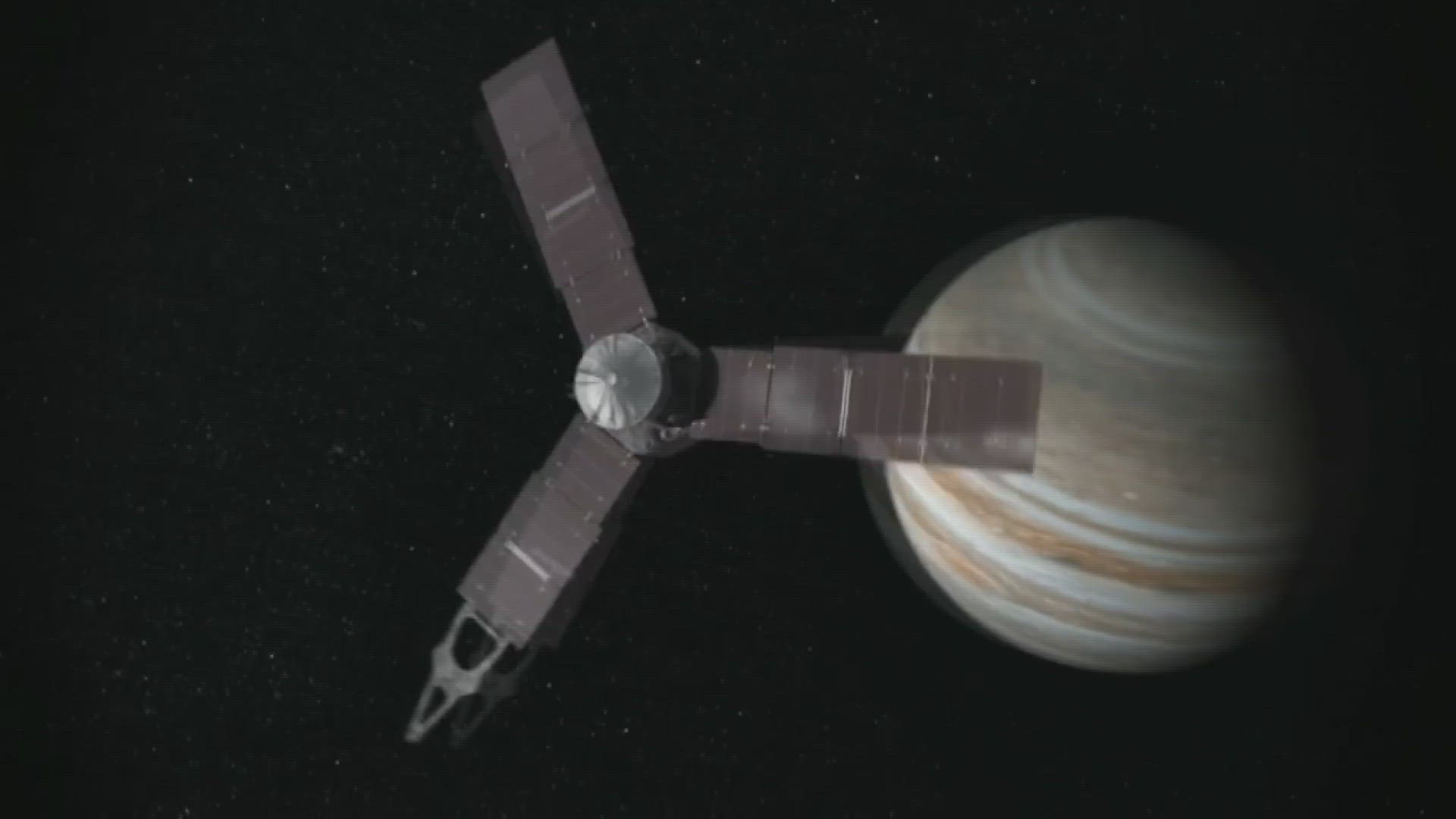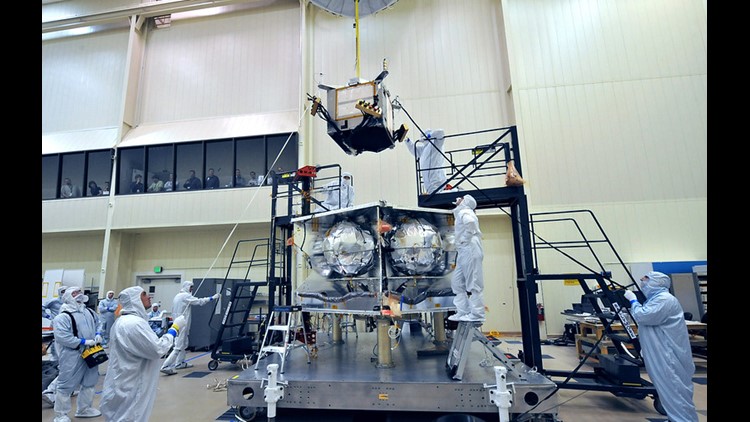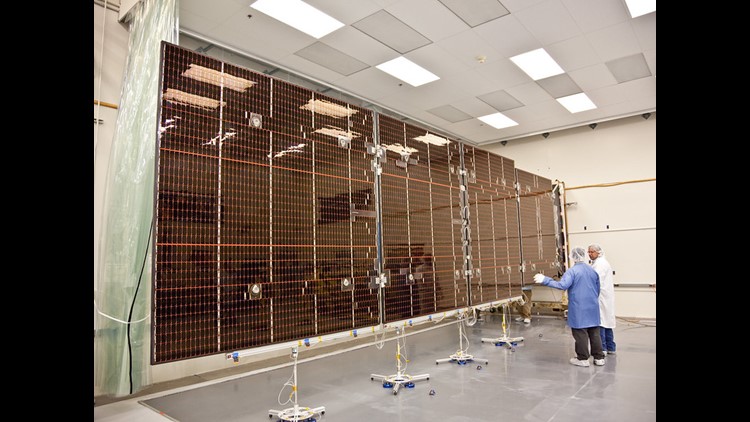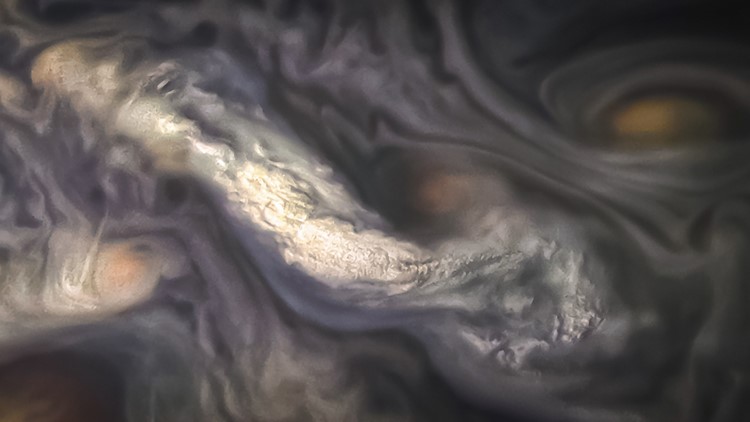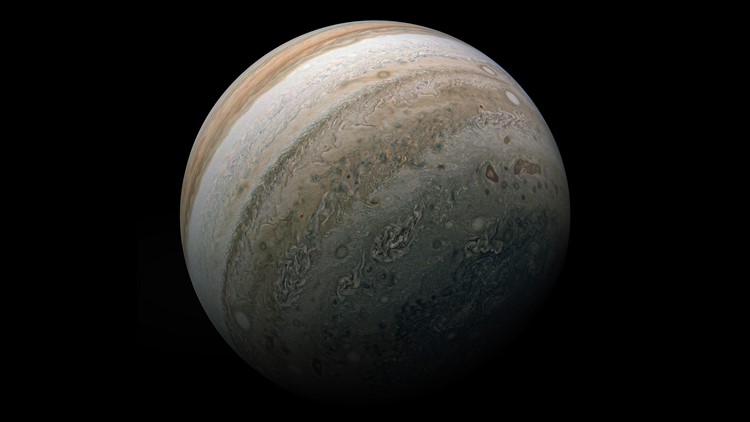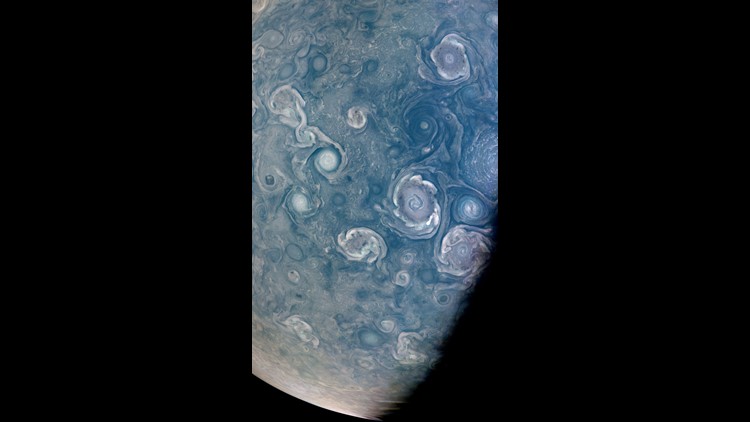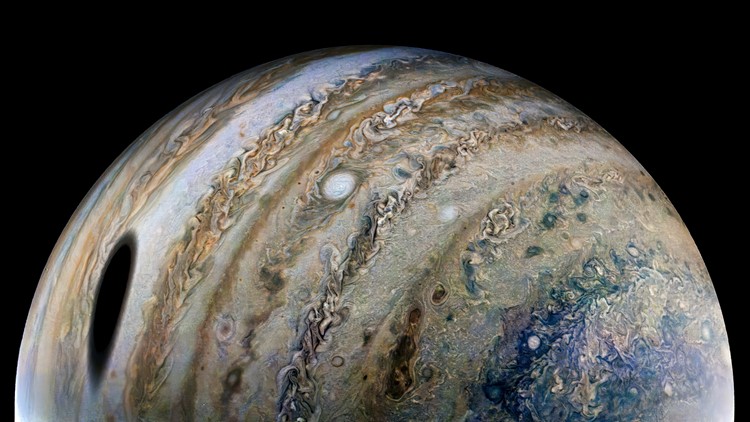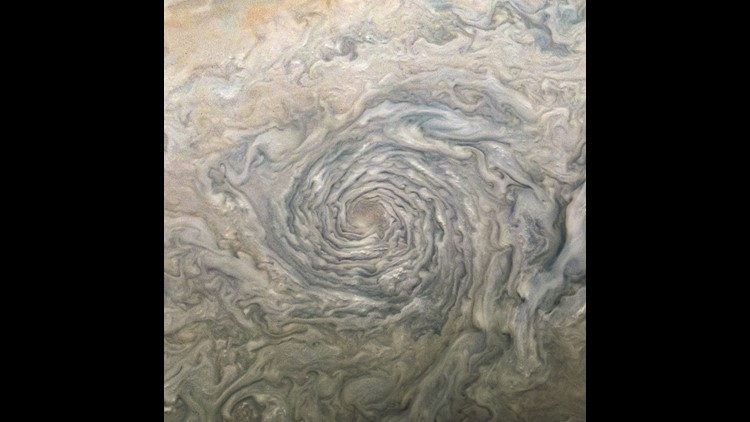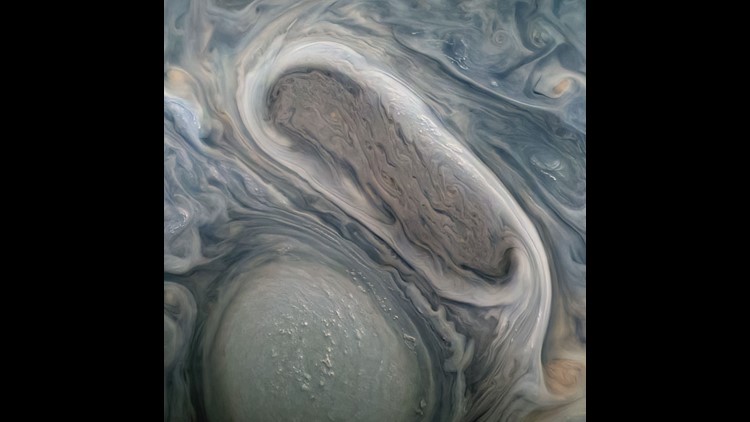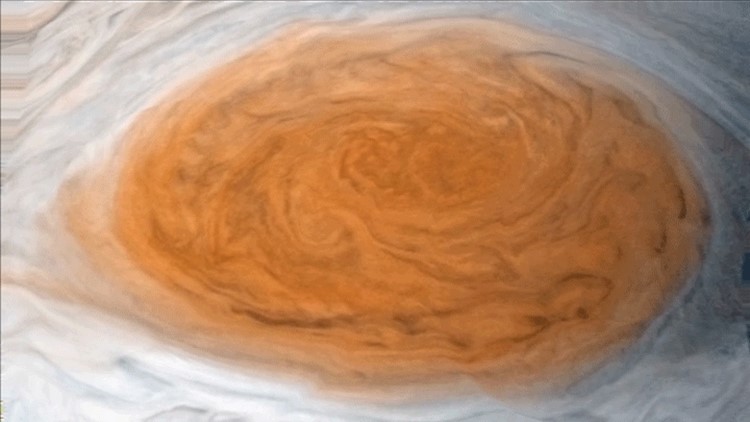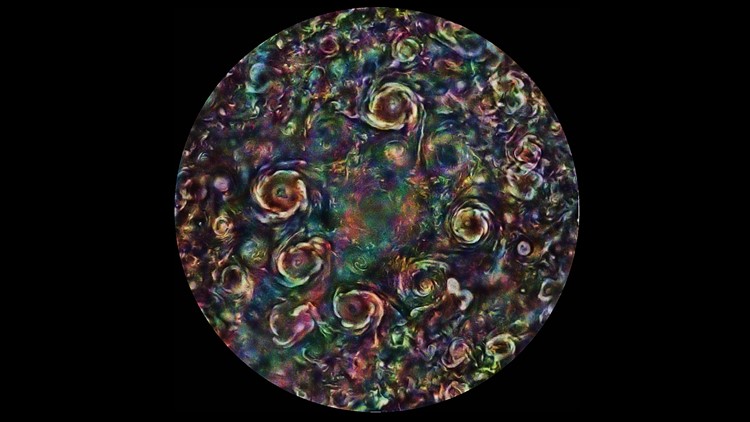LITTLETON, Colo. — The spacecraft called Juno was sent to explore Jupiter in 2011. Over its 10-year mission, it gave humans a detailed and wonderous view of the solar system's biggest planet.
“When you look at Juno’s imagery, it’s almost like you’re looking at a Van Gogh painting," said Scott Bolton, the mission’s principal investigator. "I mean Jupiter is just an incredible palette."
He said besides the amazing visuals, the Juno mission has also been full of scientific breakthroughs.
Juno has helped redefine our understanding of Jupiter’s weather and atmosphere including the swarms of cyclones on both of the planet's poles and the big red dot – the most famous storm in the solar system.
And Bolton said Juno shocked the science community when it showed that Jupiter has more of a fuzzy core instead of a rocky one.
“And so, a lot of our ideas have been sort of turned upside down, it’s a whole new planet," said Bolton. "And it says something about how giant planets, in general, must work, not just in our solar system but beyond.”
Bolton said another surprise might be that Juno is still operating. The mission was only scheduled to last until the summer of 2021 because scientists knew that the harsh environment around Jupiter would take a heavy toll on the space explorer.
“Jupiter’s radiation belts are on steroids. They’re much more serious," he said comparing them to the Van Allen radiation belts near earth. "They have much higher energy, more particles, much more dangerous.”
Amazing images of Jupiter from the Colorado built Juno spacecraft
But Bolton said Juno is tough and its mission has been extended, thanks in part to its Colorado roots. The sturdy space probe was built in Littleton by Lockheed Martin.
"Lockheed Martin also had a lot to do with the design. They did a lot of the calculations and figured out how to shield the spacecraft," said Bolton. "It took a lot of great engineers and scientists from a lot of different places to build such a quality spacecraft and plan such a solid mission."
Now, Juno is providing bonus science. It explored Jupiter’s moons of Ganymede and Europa. And this December, it will make the closest measurement of the volcanic moon Io.
“I mean it was a gamble. Juno was going in a place that nobody had ever gone before, and we knew it was probably the most dangerous place in the solar system,” said Bolton.
Juno is tough but it won’t last forever. Bolton said if the radiation doesn’t get it, it will eventually run out of gas in 2025. NASA plans to keep giving it new assignments as long as it lasts.
SUGGESTED VIDEOS: Latest from 9NEWS

